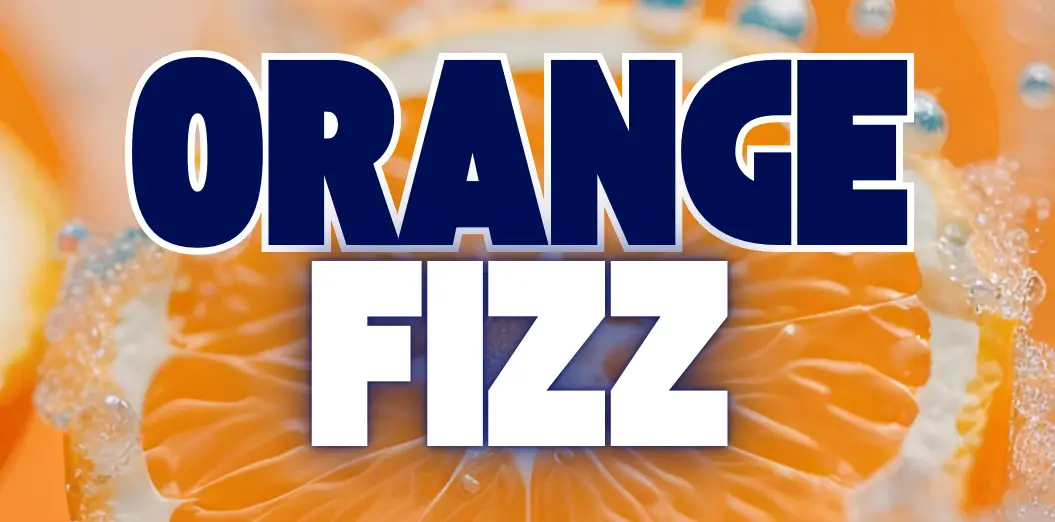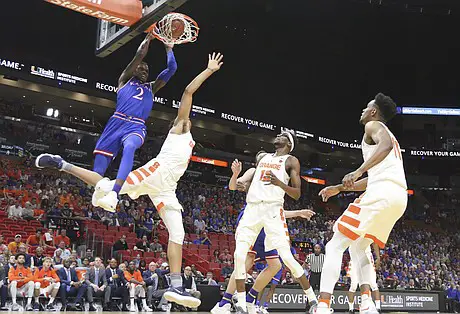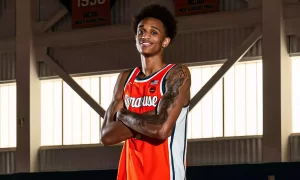The narrative so far this season is that the SU defense has been the best part of this Syracuse basketball team. And, for the most part, the statistics tend to agree with this narrative. SU has the 24th best scoring defense (62 ppg) in the country, while offensively (72.3 ppg) it doesn’t even rank within the top 50 teams in the nation. Allowing just 76 points to a Kansas team that was scoring nearly 95 per contest heading into the Hoophall Miami Invitational final was another fantastic accomplishment for a defense that Jim Boeheim said was going to be the key to winning games this year with such a young team. However, despite all the apparent success that the Orange has had this season in starting 6-1 and having a top-25 defense, there is one key facet, more specifically one key area on the court, where SU’s opponents have been able to exploit the vaunted 2-3 zone and SU needs to figure it out before it gets to conference play.
The most effective part of any 2-3 zone is that it packs it in in the paint and takes away easy shots near the rim. Leaving one, two, sometimes even three guys near the rim forces teams to beat you with the outside shot, whether it be the three-ball or the midrange game. In the zone, you’re essentially saying, “Hey. I’ll give you the three. I dare you to make it.” At least that’s how it is supposed to go.
Unfortunately for Syracuse, there’s a huge soft spot in its specific version of the zone that leaves it vulnerable in the post, especially with the type of personnel (length over bulk) that SU has at its disposal. The SU 2-3 isn’t your stereotypical zone defense and seeks to take away the three-point shot more often than other zones. To do this, when the ball rotates to the wings near the three-point line, the wing defenders on the bottom of the 2-3 zone rotate up to take away the shot. When they do this, the zone becomes more of a 2-2-1 than a 2-3 and leaves the center alone on an island. When these closeouts happen, opposing teams insert one of their players into the high post right around the free-throw line, creating an open gap in the defense where they can get some breathing room and take pressure off the ballhandler. The ball then rotates to that spot and SU starts to ball watch. In the games against both Texas Southern and Maryland, there were times when all five Syracuse defenders on the floor were staring at the ball when it got to the high post and had no recollection as to what was going on around them.
Once the ball gets to the free-throw line and everyone starts ball-watching, the new configuration which SU creates when it tries to take away the three-point shot comes back to bite them. Like I said, the defensive rotation to the wings leaves the center on an island. Then, with the center still ball-watching and isolated, opponents slip backdoor, in behind the entirety of the defense, and get open on the baseline for easy buckets. We saw it with Trayvon Reed of Texas Southern getting easy lobs over the top of an over-committed Paschal Chukwu. We saw it with Bruno Fernando of Maryland getting easy looks on bounce passes past the outstretched arms of Bourama Sidibe, Matthew Moyer and Oshae Brissett. In those two games alone Reed and Fernando both scored double-digits and shot over 90% from the field.
It got even worse in the Kansas game when the Jayhawks converted on what seemed like every over-the-top lob they tried.  Essentially because of the way the Syracuse 2-3 zone rotates to eliminate the three-point shot, a huge gap is created in the middle of the defense which draws bodies and, more importantly, eyes toward the ball which then allows teams to go backdoor on the SU defense and take advantage of the isolated center in the middle of the 2-3 zone.
Making matters worse, that high post/free-throw line area isn’t just dangerous in allowing teams easy buckets on the interior. Once again using that same kind of rotation that leaves SU in more of a 2-2-1 than a 2-3, the ball heads into the high post and SU’s defenders converge with both their bodies and their eyes. Once again they lose track of anybody that doesn’t have the basketball and once again it comes back to bite them. Even when SU is successful in taking away the easy shots on the baseline, the ball-watching it participates in leaves lethal shooters open on the perimeter. Opponents go inside-out in these situations kicking the ball back out to the behind the three-point arc where, because SU defenders are stuck fixating on the ball, they can’t get back out to contest shots and opponents get easy looks for really great shooters. We saw this kind of lackluster defense involving the high-post in the Maryland game where Kevin Huerter and Justin Jackson torched the Orange for a combined nine three-point shots on an outstanding 64% shooting night.
In the end, the SU defense really has been pretty good so far this season. Considering the kind of offensive talent they lack in many situations, the defense has found ways to counteract cold stretches for the offense and keep SU in games. However, there have been situations where the defense certainly wasn’t perfect. Most of those situations start with the over-rotation of the zone, opponents’ insertion of the ball into the high post and the ball-watching that comes with this positioning of the ball. Then they end with easy looks, both near the rim and from beyond the arc. If SU can figure out a way to deny the ball in the high post while still staying true to the principles of the 2-3 zone, or if it can stop itself from ball-watching and become more aware of its surroundings on the defensive end, then this defense can shore itself up and become the kind of special unit it has the potential to be.


















